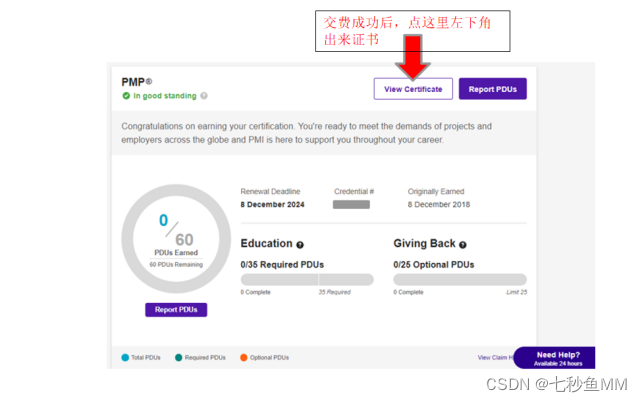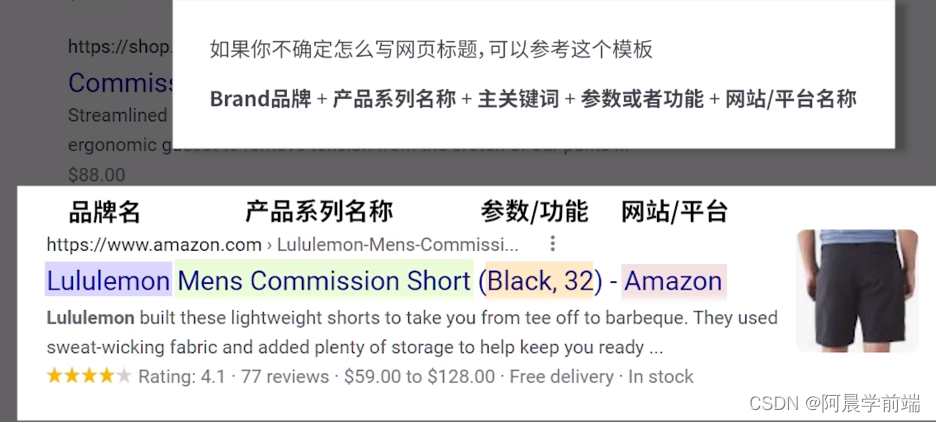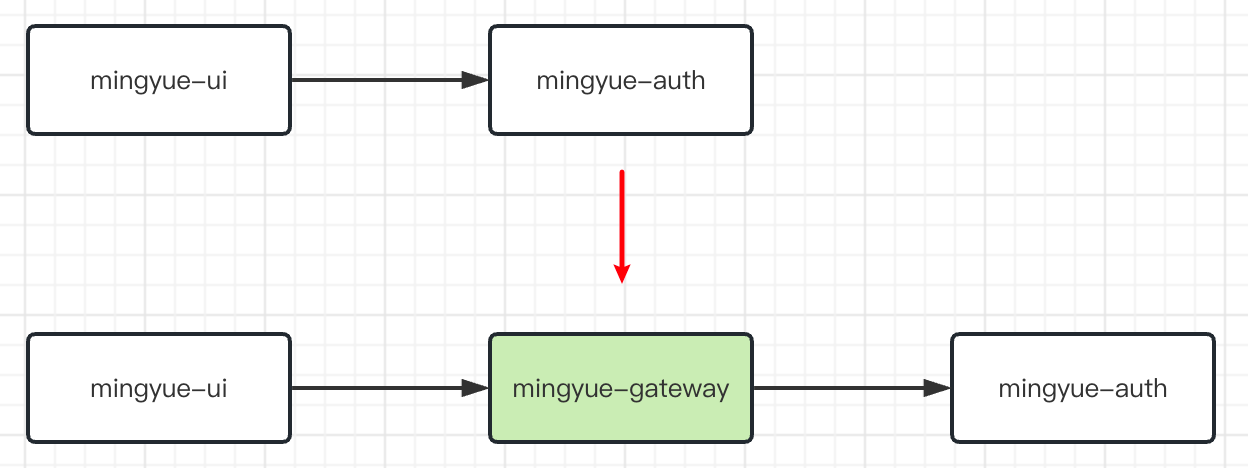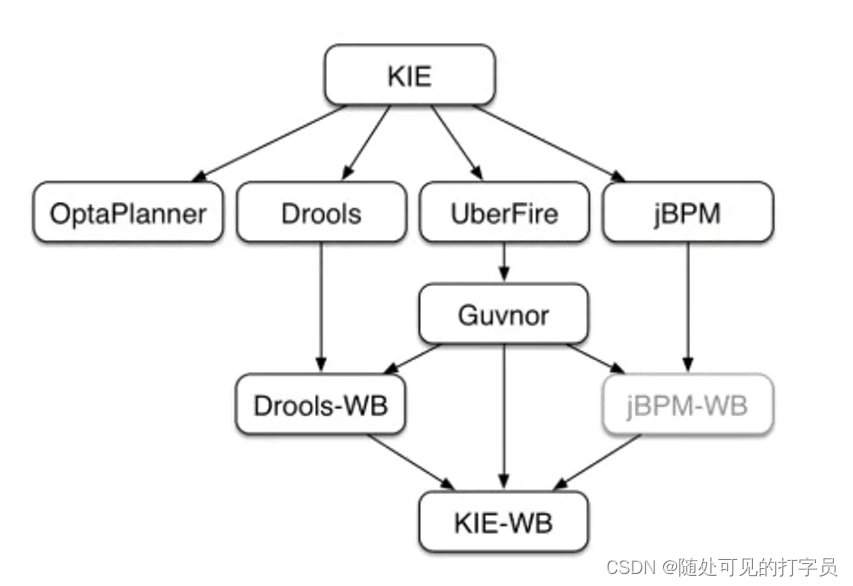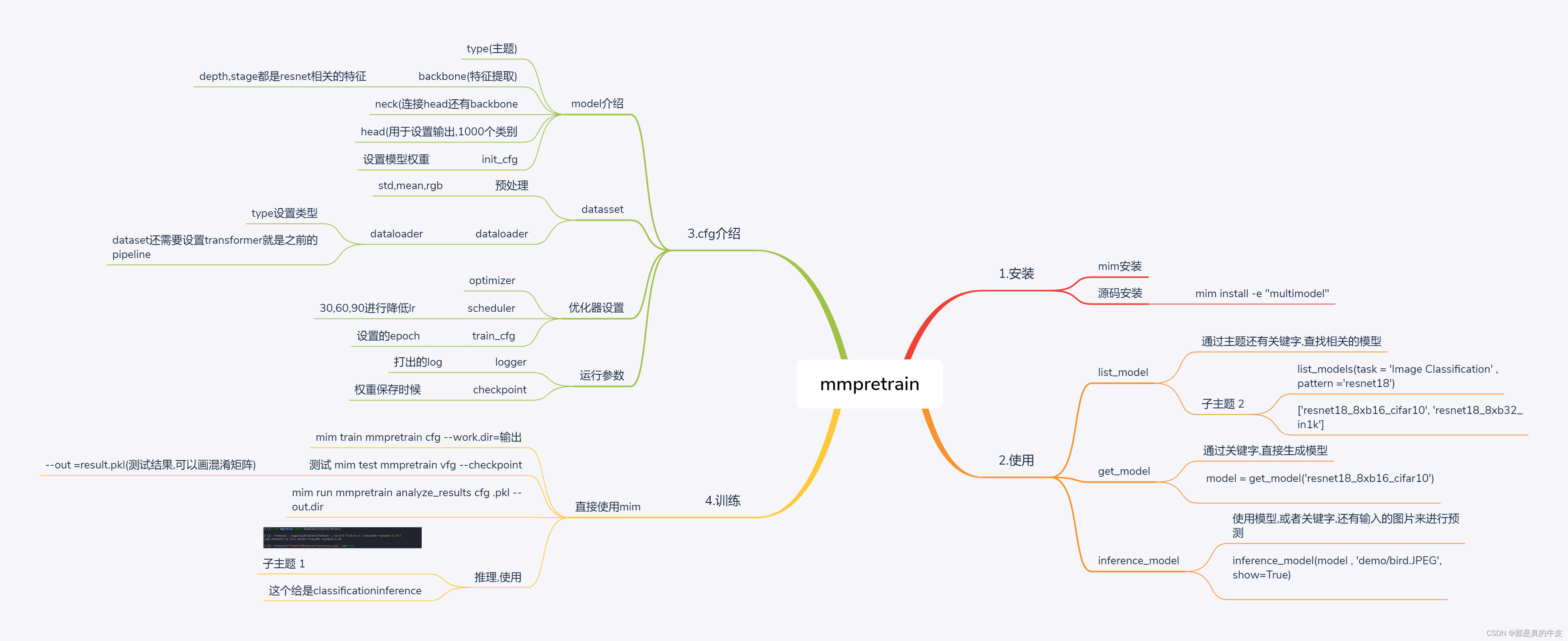介绍
🥙🥙🥙更加合理和更加强大
Promise,译为承诺,是异步编程的一种解决方案,比传统的解决方案(回调函数)更加合理和更加强大
在以往我们如果处理多层异步操作,我们往往会像下面那样编写我们的代码
doSomething(function(result) {
doSomethingElse(result, function(newResult) {
doThirdThing(newResult, function(finalResult) {
console.log('得到最终结果: ' + finalResult);
}, failureCallback);
}, failureCallback);
}
以上形成了经典的回调地狱
现在通过Promise的改写上面的代码
doSomething().then(function(result){
return doSomethingElse(result);
}).then(function(newResult){
return doThirdThing(newResult);
}).then(function(finalResult){
console.log("最终结果:" + finalResult);
}).catch(failureCallback)
优势:
- 链式操作减低了编码难度
- 代码可读性明显增强
状态
🥪🥪🥪promise对象共有三种状态。
- pending(进行中)
- fulfilled(已成功)
- rejected(已失败)
特点
- 对象的状态不受外界影响,只有异步操作的结果,可以决定当前是哪一种状态
- 一旦状态改变(从pending变为fulfilled和从pending变为rejected),就不会再变,任何时候都可以得到这个结果
流程
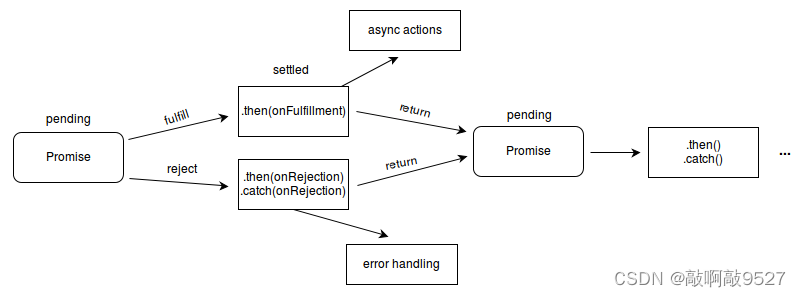
用法
🌮🌮🌮Promise对象是一个构造函数,用来生成Promise实例
const promise = new Promise(function(resolve,reject){});
Promise构造函数接受一个函数作为参数,该函数的两个参数分别是resolve和reject
- resolve函数的作用是,将Promise对象的状态从“未完成”变为“成功”
- reject函数的作用是,将Promise对象的状态从“未完成”变为“失败”
实例方法
🌯🌯🌯
- then()
- catch()
- finally()
then()
🥫🥫🥫then是实例状态发生改变时的回调函数,第一个参数是resolved状态的回调函数,第二个参数是rejected状态的回调函数
then方法返回的是一个新的Promise实例,也就是promise能链式书写的原因
getJSON("/posts.json").then(function(json){
return json.post;
}).then(function(post){
//...
})
catch()
🍖🍖🍖catch()方法是.then(null, rejection)或.then(undefined, rejection)的别名,用于指定发生错误时的回调函数
getJSON("/posts.json").then(function(posts){
//..
}).catch(function(error){
//处理 getJSON 和 前一个回调函数运行时发生的错误
console.log('错误',error);
})
Promise对象的错误具有“冒泡”性质,会一直向后传递,直到被捕获为止
getJSON('/post/1.json').then(function(post){
return getJSON(post.commentURL);
}).then(function(comments){
//thing
}).catch(function(error){
//处理前面三个Promise产生的错误
})
一般来说,使用catch方法代替then()第二个参数
Promise对象抛出的错误不会传递到外层代码,即不会有任何反应
const someAsyncThing = function() {
return new Promise(function(resolve, reject) {
// 下面一行会报错,因为x没有声明
resolve(x + 2);
});
};
浏览器运行到这一行,会打印出错误提示ReferenceError: x is not defined,但是不会退出进程
catch()方法之中,还能再抛出错误,通过后面catch方法捕获到
finally()
finally()方法用于指定不管 Promise 对象最后状态如何,都会执行的操作
promise
.then(result => {···})
.catch(error => {···})
.finally(() => {···});
构造函数方法
🍕🍕🍕Promise构造函数存在以下方法:
- all()
- race()
- allSettled()
- resolve()
- reject()
- try()
all()
Promise.all()方法用于将多个 Promise实例,包装成一个新的 Promise实例
const p = Promise.all([p1, p2, p3]);
接受一个数组(迭代对象)作为参数,数组成员都应为Promise实例
实例p的状态由p1、p2、p3决定,分为两种
- 只有p1、p2、p3的状态都变成fulfilled,p的状态才会变成fulfilled,此时p1、p2、p3的返回值组成一个数组,传递给p的回调函数
- 只要p1、p2、p3之中有一个被rejected,p的状态就变成rejected,此时第一个被reject的实例的返回值,会传递给p的回调函数
注意,如果作为参数的 Promise 实例,自己定义了catch方法,那么它一旦被rejected,并不会触发Promise.all()的catch方法
const p1 = new Promise((resolve, reject) => {
resolve('hello');
})
.then(result => result)
.catch(e => e);
const p2 = new Promise((resolve, reject) => {
throw new Error('报错了');
})
.then(result => result)
.catch(e => e);
Promise.all([p1, p2])
.then(result => console.log(result))
.catch(e => console.log(e));
// ["hello", Error: 报错了]
如果p2没有自己的catch方法,就会调用Promise.all()的catch方法
race()
Promise.race()方法同样是将多个 Promise 实例,包装成一个新的 Promise 实例
const p = Promise.race([p1, p2, p3]);
只要p1、p2、p3之中有一个实例率先改变状态,p的状态就跟着改变率先改变的 Promise 实例的返回值则传递给p的回调函数
const p = Promise.race([
fetch(),
new Promise(function(resolve,reject){
setTimout(()=>reject(new Error('request timeout')),5000)
})
])
p.then(console.log)
.catch(console.error);
allSettled()
Promise.allSettled()方法接受一组 Promise 实例作为参数,包装成一个新的 Promise 实例
只有等到所有这些参数实例都返回结果,不管是fulfilled还是rejected,包装实例才会结束
const promise = [
fetch('/api-1),
fetch('/api-2),
fetch('/api-3),
];
await Promise.allSettled(promise);
removeLoadingIndicator();
resolve()
Promise.resolve('foo')
//等价于
new Promise(resolve => resolve('foo'))
参数可以分成四种情况,分别如下:
- 参数是一个 Promise 实例,promise.resolve将不做任何修改、原封不动地返回这个实例
- 参数是一个thenable对象,promise.resolve会将这个对象转为 Promise对象,然后就立即执行thenable对象的then()方法
- 参数不是具有then()方法的对象,或根本就不是对象,Promise.resolve()会返回一个新的 Promise 对象,状态为resolved
- 没有参数时,直接返回一个resolved状态的 Promise 对象
reject()
Promise.reject(reason)方法也会返回一个新的 Promise 实例,该实例的状态为rejected
const p = Promise.reject('出错了');
// 等同于
const p = new Promise((resolve, reject) => reject('出错了'))
p.then(null, function (s) {
console.log(s)
});
// 出错了
Promise.reject()方法的参数,会原封不动地变成后续方法的参数
Promise.reject('出错了')
.catch(e => {
console.log(e === '出错了')
})
// true
使用场景
🍔🍔🍔将图片的加载写成一个Promise,一旦加载完成,Promise的状态就发生变化
const preloadImage = function(path){
return new Promise(function(resolve,reject){
const image = new Image();
image.onload = resolve;
image.onerror = reject;
image.src = path;
});
};
通过链式操作,将多个渲染数据分别给个then,让其各司其职。或当下个异步请求依赖上个请求结果的时候,我们也能够通过链式操作友好解决问题
//各司其职
getInfo().then(res=>{
let { bannerList } = res
console.log(bannerList)
return res
}).then(res => {
let {aboutInfo } = res
console.log(aboutInfo)
return res
}).then(res => {
let {getInfo} = res
console.log(getInfo)
return res
})
通过all()实现多个请求合并在一起,汇总所有请求结果,只需设置一个loading即可
function initLoad(){
// loading.show() //加载loading
Promise.all([getBannerList(),getStoreList(),getCategoryList()]).then(res=>{
console.log(res)
loading.hide() //关闭loading
}).catch(err=>{
console.log(err)
loading.hide()//关闭loading
})
}
//数据初始化
initLoad()



